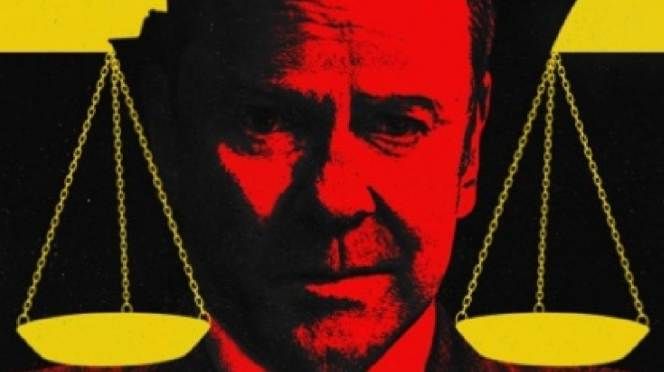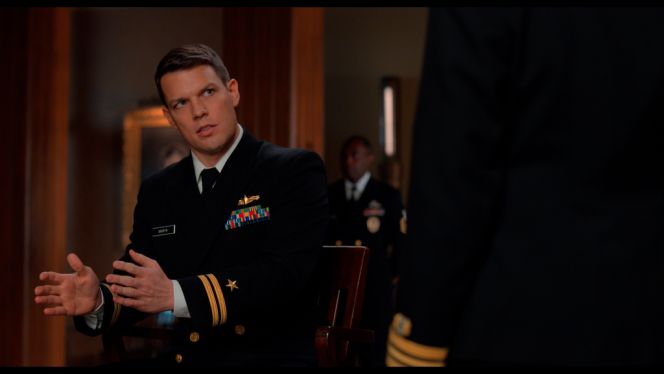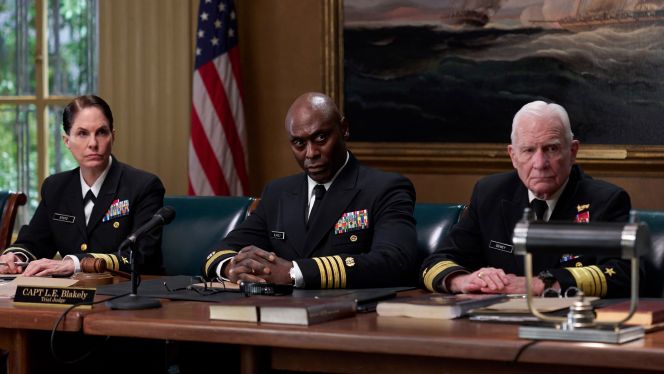MOVIE REVIEW – William Friedkin died last year, leaving us with one last film, the stirring, powerful courtroom drama “The Caine Mutiny Court-Martial”. Adapted by Friedkin from Herman Wouk’s play, Mutiny on the Caine Mutiny Court-Martial ran the risk of being too theatrical, too much like a play transplanted to the screen without adding anything cinematic. Fortunately, Friedkin knows exactly how to make the movie flow, aided by Darrin Navarro’s brisk, fast-paced editing.
Friedkin and cinematographer Michael Grady seem to handle the situation with ease – most of the movie takes place in a single courtroom. But the placement and movement of the camera helps create the effect of a stage, conveying much in the way it shows – or hides – the actors and their surroundings. When Friedkin wants to convey the isolation of certain characters, he places them alone in the frame, cutting to wide shots that help place us in a particular location. As a result, this single courtroom location is exploited to the fullest, and the action, and the movie itself, miraculously never gets boring. It is, in fact, the perfect definition of the “when less is more” principle. In short, Friedkin was a master of his craft to the very end. One only wishes he could have made more movies after this one.
Is the rebel officer or the captain, right?
At the center of the story is Lieutenant Barney Greenwald, a Navy lawyer who declares early on, before the headlines hit, that he believes his client is guilty. His client is Lieutenant Stephen Maryk, a senior officer on the minesweeper Caine. Maryk is accused of mutiny, a serious charge that could end his naval career and carry a sentence of up to 15 years in prison. Maryk does not deny taking control of the ship, but claims she had good reason to do so and hopes to use Greenwald to help her prove her case.
According to Maryk, the ship’s captain, Lieutenant Commander Phillip Queeg, exhibited behavior during a major storm that showed signs of mental illness. According to Maryk, Queeg’s behavior endangered the lives of the crew and he decided to relieve him of command. Doctors examined Queeg and found that he did not suffer from mental illness. Now it’s up to Greenwald to prove otherwise. To do this, the lawyer calls a number of witnesses to court, while facing an angry prosecutor who disagrees with the defense lawyer’s tactics and approach and is even angry with him.
The tension builds during the trial, and Kiefer Sutherland has never been better
You can almost feel the simmering tension in the courtroom, with the crackling, often harshly worded dialogue and conflicting emotions, even as they follow the rhythm of a courtroom transcript. All of this is enhanced by a number of excellent performances. Clarke’s role is a tricky one; there’s a lot more to this defense attorney character than meets the eye, and the way the actor authentically portrays his character’s inner turmoil is impressive.
Then there is Kiefer Sutherland, the former star of 24, who gives perhaps the best performance of his career. And Sutherland has done nothing less than take on the role of another movie legend, Humphrey Bogart, from the earlier 1954 adaptation, which focused much more on the events on the ship, but Bogart was brilliant in that movie as well. Unlike Bogart, Sutherland is only in the movie for a short time, but he makes the most of every moment, with his great facial expressions and his perfectly pitched tone: while playing with words, it’s as if certain words almost hurt him. He shapes Queeg’s character into a complex, complicated personality, not just an ordinary villain or a deranged commander who has lost his medicine.
But the real beauty of the movie is how it plays with the viewer’s point of view. It’s easy to support Maryk as a hero against the system, and just as easy to condemn Queeg as an arrogant, power-mad commander who deserves to be demoted for his bullying. The information we learn about Queeg may indeed be disturbing. But Friedkin’s cleverly written screenplay keeps us questioning every detail of the case, and it is the astonishing, pithy epilogue that puts the whole movie in a shocking new context.
Friedkin’s last great creation
Friedkin’s camera also moves beautifully around the courtroom, capturing reaction shots that reveal a lot even if they are just facial expressions – of particular note was the performance of the late Lance Reddick, who plays the chief judge in the case – his facial expressions were quite amazing. For example, after a startling revelation, Reddick’s character’s eyes widen and he is completely shocked, as if he has been slapped. This is one of the many great moments in the movie, and highlights how Friedkin is so adept at handling such subtleties on screen, not just how he portrayed the demon-possessed little girl in The Exorcist.
For this reason, as we approached the movie’s somewhat surprising conclusion, I was once again saddened that we lost Friedkin last year. He was indeed a great loss to us, as his latest film proves. But at least he left us one last impressive movie.
-Gergely Herpai (BadSector)-
The Caine Mutiny Court-Martial
Direction - 9.4
Actors - 9.2
Story - 9.2
Visuals/Cinematography - 9.2
Ambience - 9.4
9.3
AWESOME
The Caine Mutiny Court-Martial' is William Friedkin's final film, a tense courtroom drama highlighted by excellent acting and atmosphere. Kiefer Sutherland is particularly strong, and the epilogue adds a surprising context to the story.














Leave a Reply